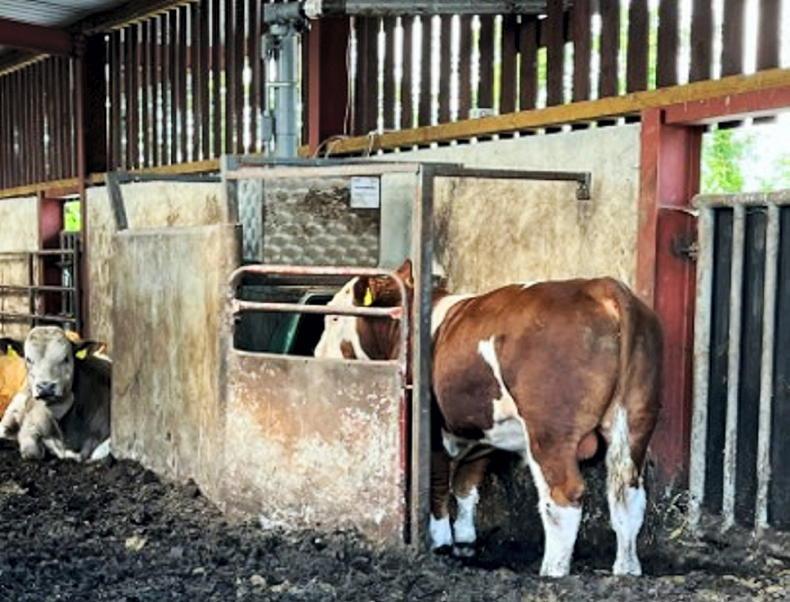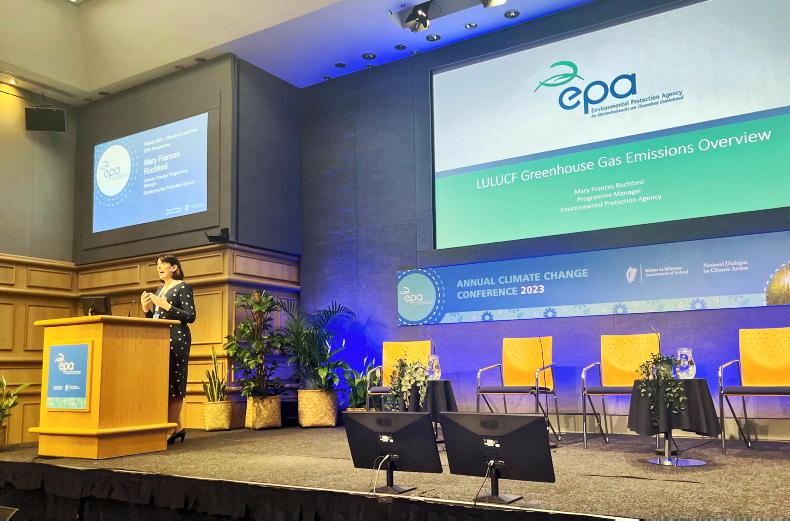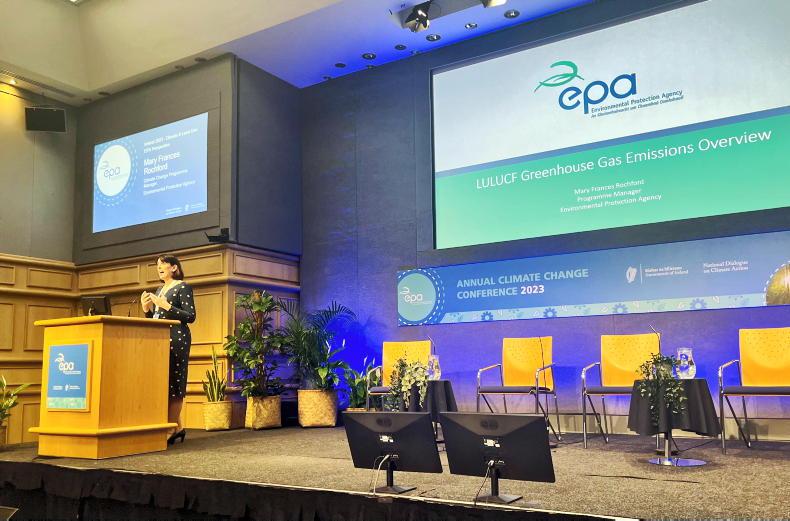The Environmental Protection Agency (EPA) is “not holding back” in its consideration of ongoing Teagasc research on the methane emissions from agriculture, according to Professor Mary Frances Rochford.
The EPA programme manager said that such consideration of the latest farm science is part of the “bread and butter” of updating the national carbon emissions inventory.
However, she warned that such science must be peer reviewed and that while research on methane-cutting examples such as bovine feed additives might be promising in early trials, adoption and their actual impact must be taken into account.
Prof Rochford was speaking at the EPA’s annual conference on climate and land use in Dublin Castle on Thursday.
Process
The EPA programme manager described how the agency is consistently involved in the early stages of livestock methane-cutting research by Teagasc, rather than being brought in at the end of analysis or farm trials, something she said is crucial.
Prof Rochford said recent Teagasc research on the impact of livestock dung and urine on carbon emissions and sequestration has been incorporated into agriculture’s input into the national carbon inventory and suggested that more such developments could follow.

The EPA is made aware of all Teagasc climate research early and not at the final stages, says Prof Mary Frances Rochford.
She highlighted that there is an international carbon accounting and verification process to follow and that the EPA is, therefore, bound by that.
The EPA representative noted that Teagasc hasn’t yet come forward with other peer reviewed research involving livestock emissions.
Professor Rochford concluded that there is “exciting” research under way in the farm sector when it comes to climate and insisted that the EPA will incorporate all peer reviewed work once finalised.
The Environmental Protection Agency (EPA) is “not holding back” in its consideration of ongoing Teagasc research on the methane emissions from agriculture, according to Professor Mary Frances Rochford.
The EPA programme manager said that such consideration of the latest farm science is part of the “bread and butter” of updating the national carbon emissions inventory.
However, she warned that such science must be peer reviewed and that while research on methane-cutting examples such as bovine feed additives might be promising in early trials, adoption and their actual impact must be taken into account.
Prof Rochford was speaking at the EPA’s annual conference on climate and land use in Dublin Castle on Thursday.
Process
The EPA programme manager described how the agency is consistently involved in the early stages of livestock methane-cutting research by Teagasc, rather than being brought in at the end of analysis or farm trials, something she said is crucial.
Prof Rochford said recent Teagasc research on the impact of livestock dung and urine on carbon emissions and sequestration has been incorporated into agriculture’s input into the national carbon inventory and suggested that more such developments could follow.

The EPA is made aware of all Teagasc climate research early and not at the final stages, says Prof Mary Frances Rochford.
She highlighted that there is an international carbon accounting and verification process to follow and that the EPA is, therefore, bound by that.
The EPA representative noted that Teagasc hasn’t yet come forward with other peer reviewed research involving livestock emissions.
Professor Rochford concluded that there is “exciting” research under way in the farm sector when it comes to climate and insisted that the EPA will incorporate all peer reviewed work once finalised.







 This is a subscriber-only article
This is a subscriber-only article










SHARING OPTIONS: